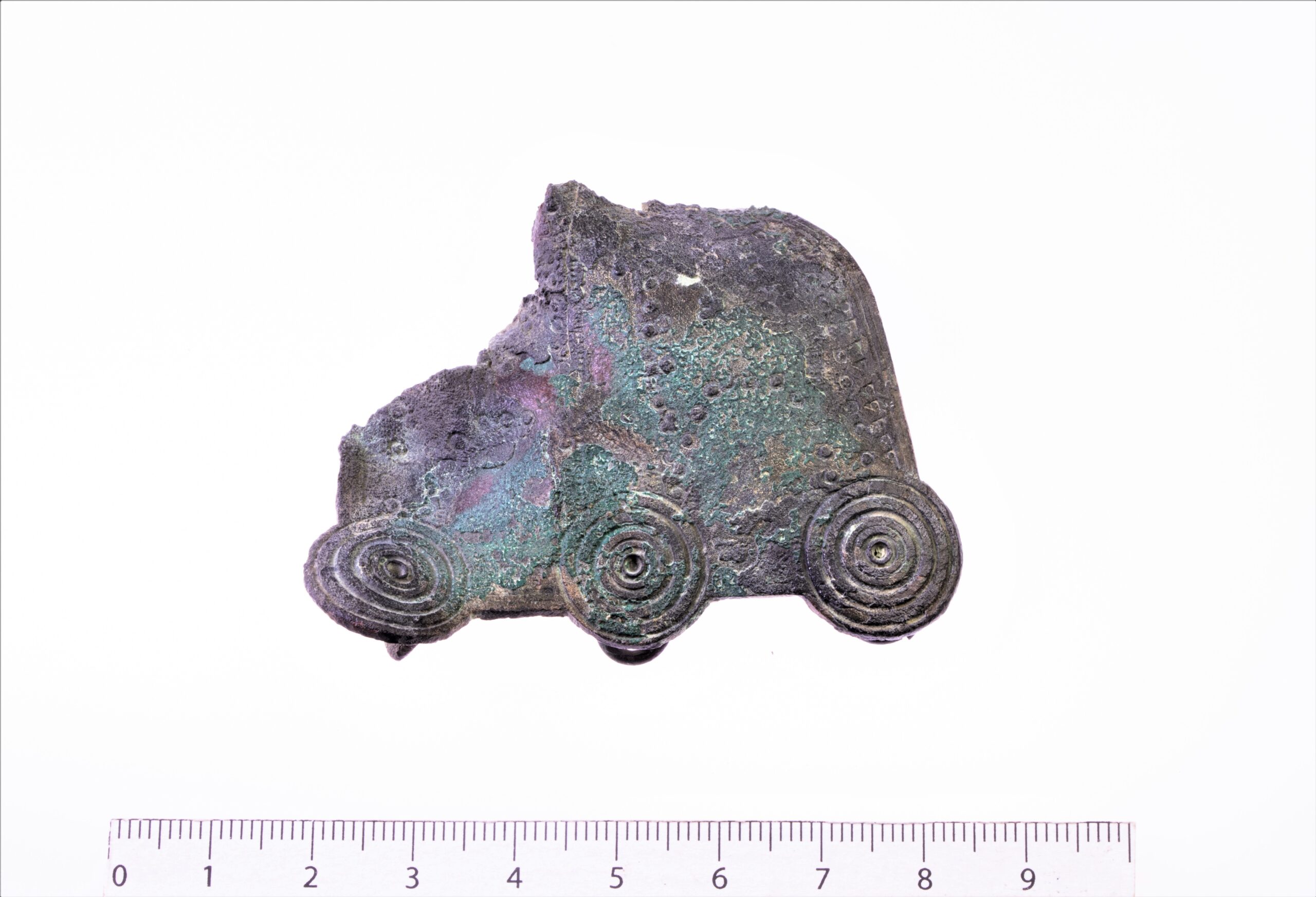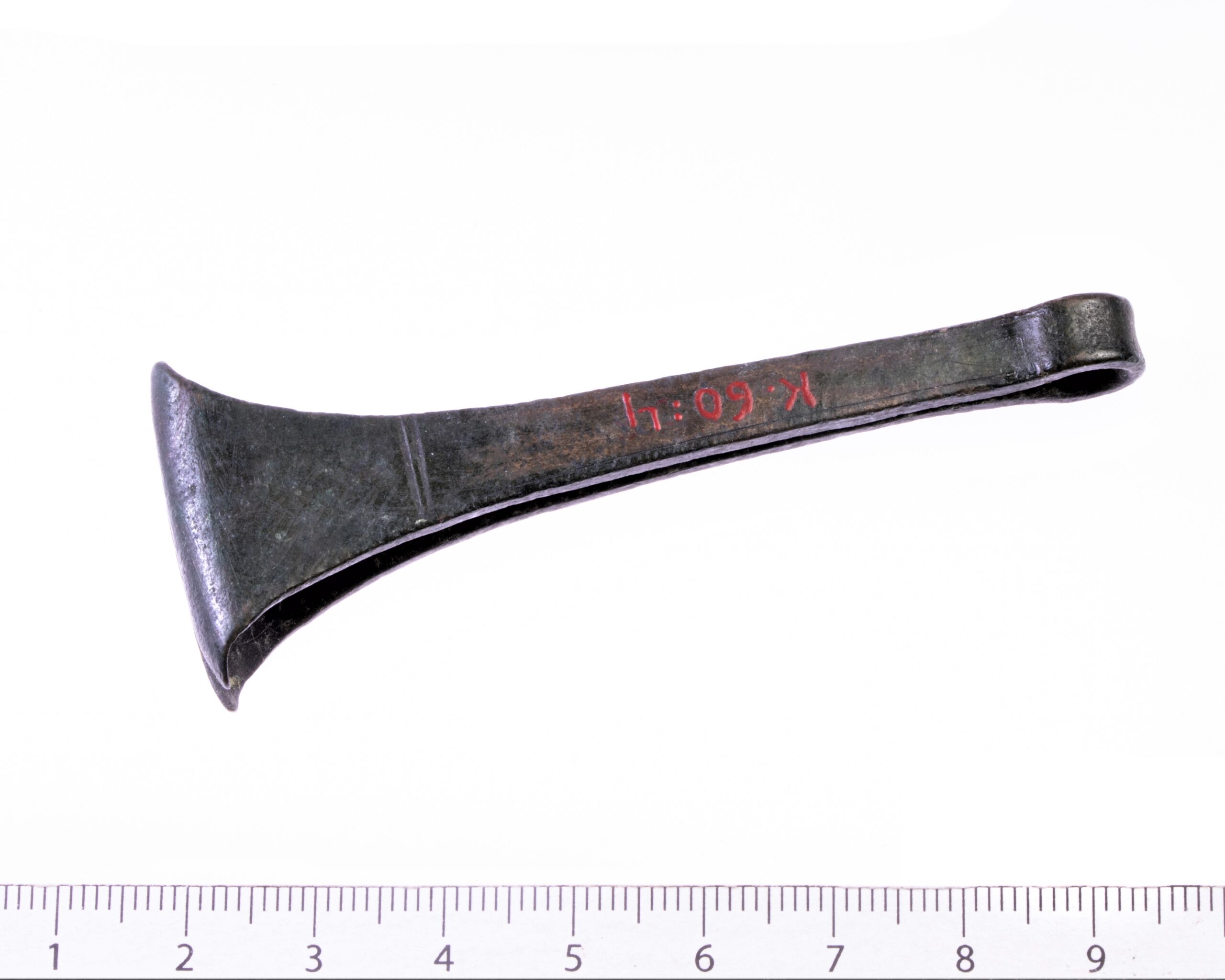Database
Our database is free to use for all history and archaeology enthusiasts. If you use our database, please do not forget to cite correctly:
Mägi, Marika; Palm, Piia Sandra. Archaeological Artefacts of Saaremaa. Foundation Osiliana / Tallinn University. Accessed: date.
The Osiliana Archaeological Database presents artefacts from Saaremaa and the surrounding small islands.
The database contains mainly Iron Age and Medieval finds that can be classified.
Undated metal or other pieces were generally excluded from the database.
Ceramics are represented by isolated examples.
The database is a work in progress and is constantly being updated.

Ure
Potsherd.
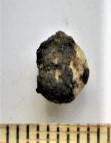
Ure
Piece of silver, melted.
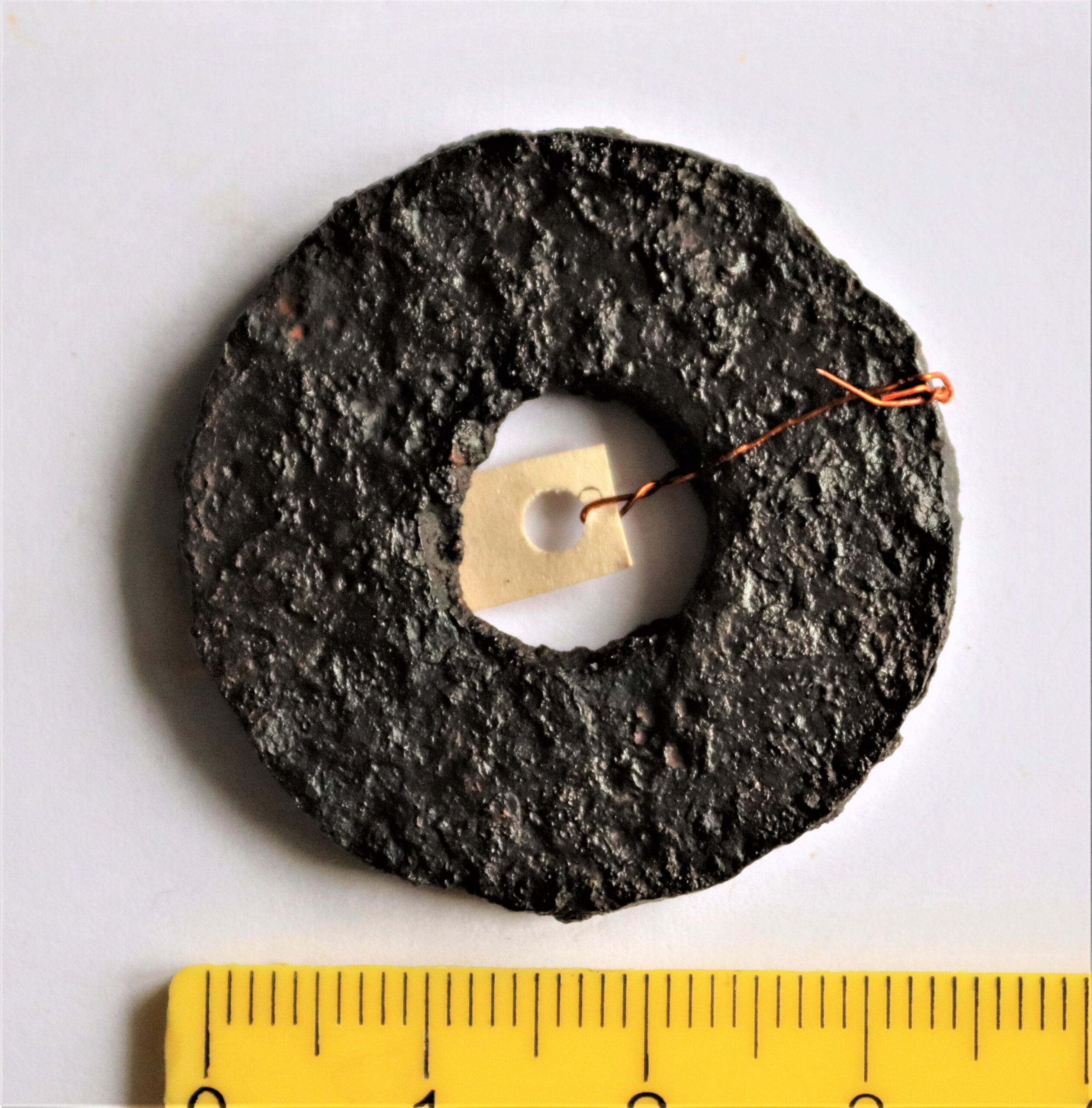
Ure
Flat disc, iron. 3 mm in height and with a hole at the center.
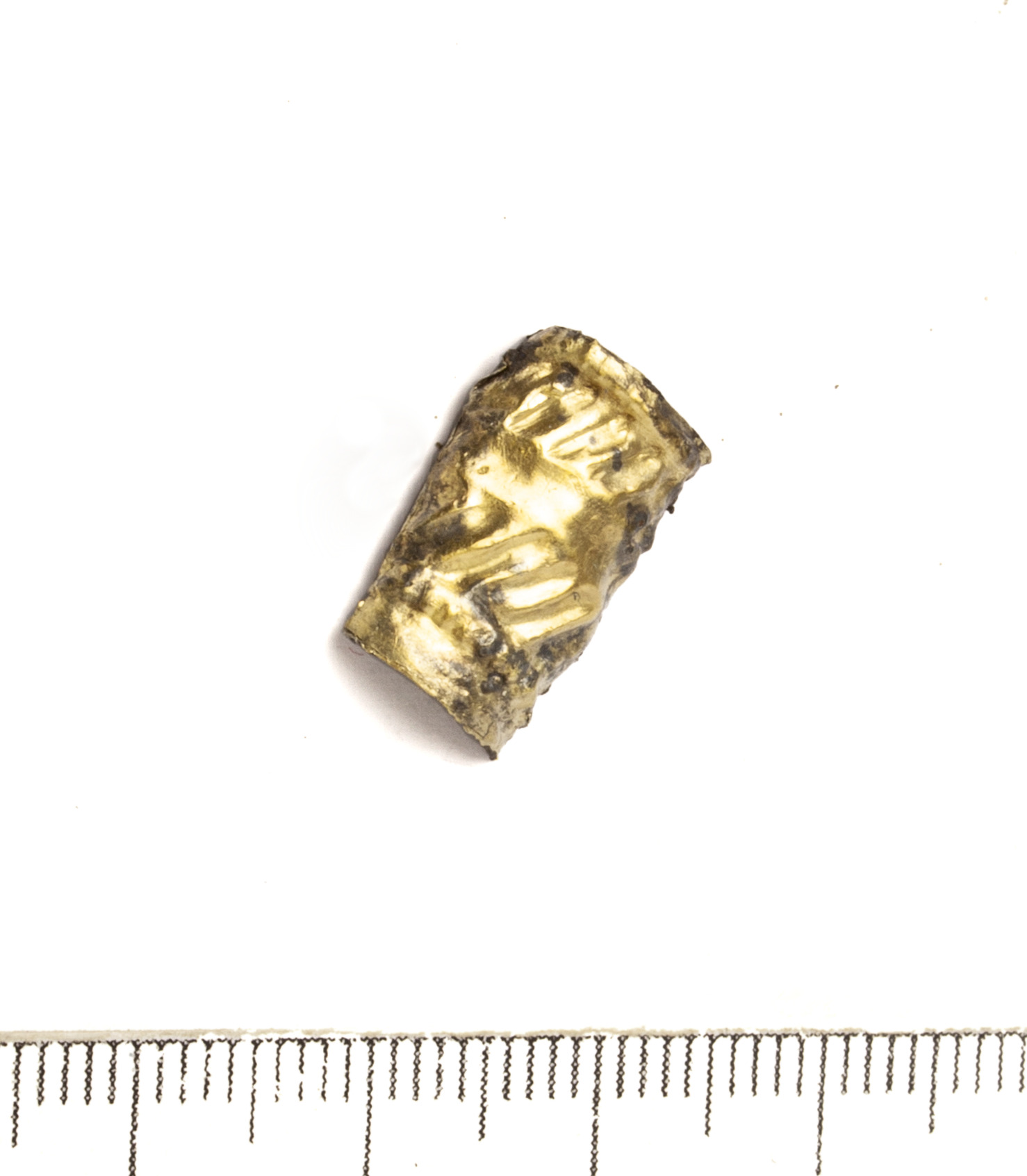
Ure
Piece of gold plate from a crossbow brooch (?), most probably from the arc. Embossed ornament with two zones of buttons and two zones of slashes between them. Ornament is similar to that of brooch nr SM10862:18.

Photo: Jaana Ratas.
Piece of gold plate from a crossbow brooch (?), most probably from the arc. Embossed ornament with two zones of buttons and two zones of slashes between them. Ornament is similar to that of brooch nr SM10862:18.
Ure
Mount, bronze. An elongated rectangle that had been attached at the ends to a belt or elsewhere with two small bronze rivets.
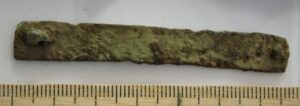


Mount, bronze. An elongated rectangle that had been attached at the ends to a belt or elsewhere with two small bronze rivets.
Upa
Saaremaa type chain holder, bronze. Semi-oval, ornamented with concentric circles. Most likely has been silver-plated.


Saaremaa type chain holder, bronze. Semi-oval, ornamented with concentric circles. Most likely has been silver-plated. It is a typical chain holder of Saaremaa, also found in northern and western Estonia, with a few examples in the surrounding areas. They can be found in both cremations and inhumation burials, often together with pins of Saaremaa type. Although previously dated to the 11th century, they were probably mainly in use in the 12th-13th centuries (Mägi 2002, 105; Spirĝis 2008, 144-145).
Literature:
Mägi, M. 2002. At the Crossroads of Space and Time. Graves, Changing Society and Ideology on Saaremaa (Ösel), 9th–13th centuries AD. CCC papers: 6. Gotland University College, Centre for Baltic Studies; Institute of History, Department of Archaeology. Tallinn, 2002. Read the book: here. Look at the drawings of the archaeological excavations: here.
Spirģis, R. 2008. Bruņrupuču saktas ar krūšu važiņrotām un lībiešu kultūras attīstība Daugavs lejtecē 10.-13. gadsimtā. Rīga: Latvijas Vēstures Institūta Apgāds.
Upa
Ring brooch, copper alloy. A so-called “Hanseatic” brooch, dated to the 13th-14th centuries in Estonia.

Ring brooch, copper alloy. A so-called “Hanseatic” brooch, dated to the 13th-14th centuries in Estonia (Reidla 2012, 96). Such brooches are found in Estonia from early Christian cemeteries, but not in the prehistoric stone graves (Laul, Valk 2014, 104). They are also common in 13th-14th century Christian cemeteries in Latvia, for example in Couronia, where they are dated from the second half of the 13th century to the early 15th century (Vaska 2017, 57).
Literature:
Laul, S., Valk, H. 2014. Siksälä kalme, I. Muistis ja ajalugu. Tartu ülikool: Tartu.
Reidla, J. 2012. Eesti ehtekultuur muinasajast uusajani. Schenkenberg, Tallinn.
Vaska, B. 2017. Rotas un ornaments Latvijā no 13.gs. līdz 18.gs. vidum. Latvijas Nacionālais vēstures muzejs. Rīga.
Upa
Tweezers, bronze. Decorated with a diagonal line.

Tweezers, bronze. Decorated with a diagonal line. Similar tweezers are found for example from the 5th to the 6th century burials in Lepna (Mägi 2004).
Literature:
Mägi, M. 2004. The mortuary house at Lepna on Southern Saaremaa. – Archaeological Fieldworks in Estonia 2003. Tallinn: Muinsuskaitseamet, 45-60.


Spearhead, iron. Petersen’s K-type, but with a slightly unusually long socket (Petersen 1919, 31-33). Belongs to the 10th or early 11th century (Pedersen 2014, 92).
Literature:
Pedersen, A. 2014. Dead Warriors – a study of weapon and equestrian burials in viking-age Denmark, AD 800-1000. National Museum Studies in Archaeology. University Press of Southern Denmark: Odense.
Petersen, J. 1919. De norske vikingesverd. En typologisk-kronologisk studie over vikingetidens vaaben. (Videnskapsselskapets Skrifter II. Hist. – Filos. klasse 1.) Kristiania.
The negative value refers to time Before Christ.


